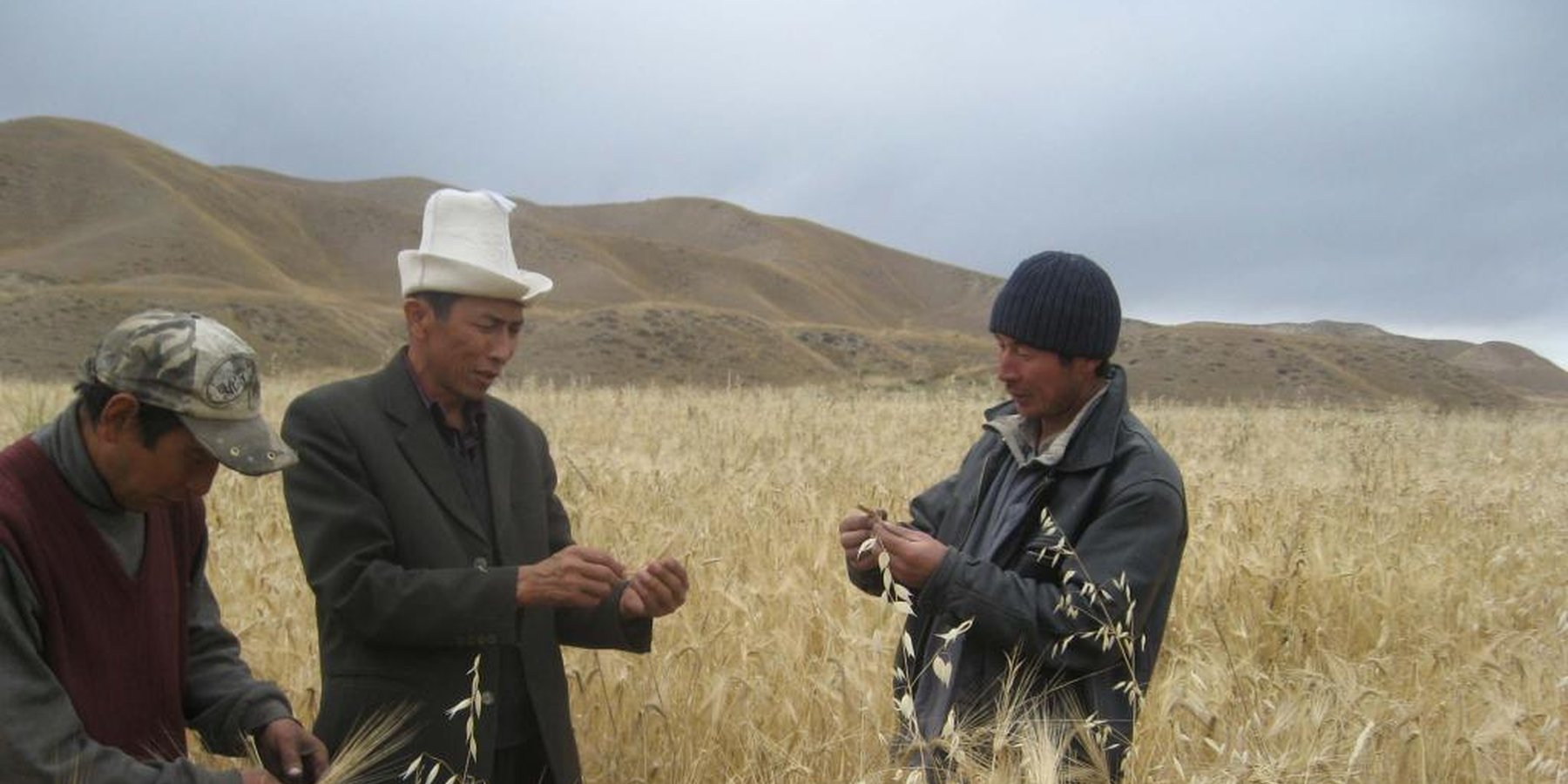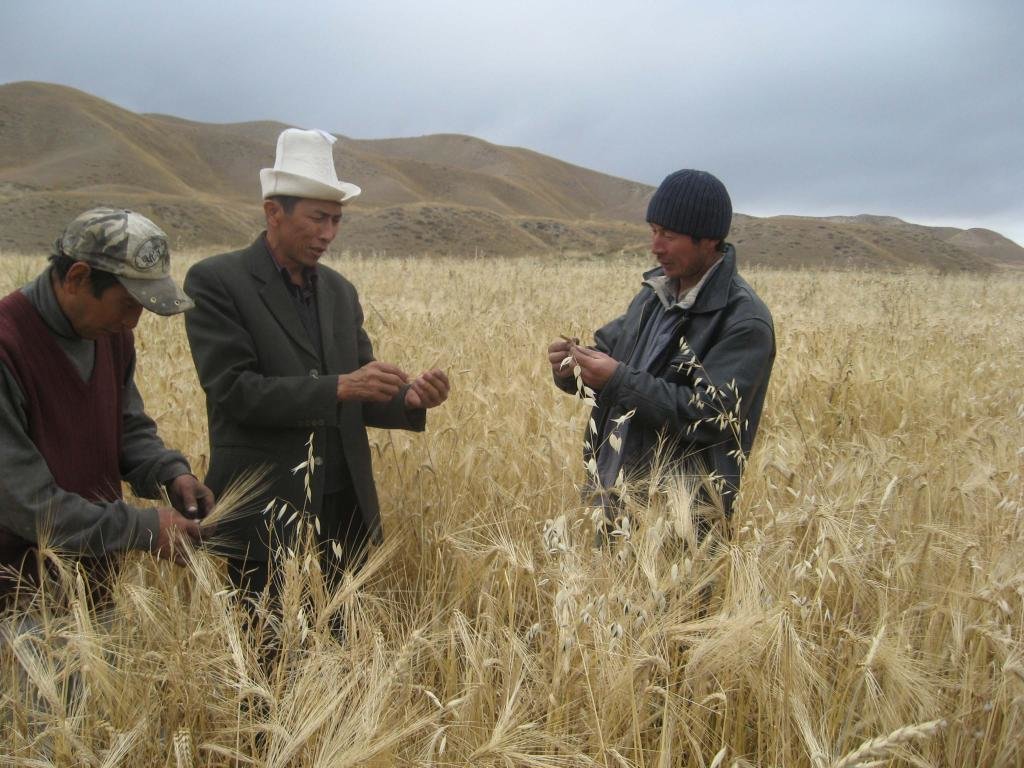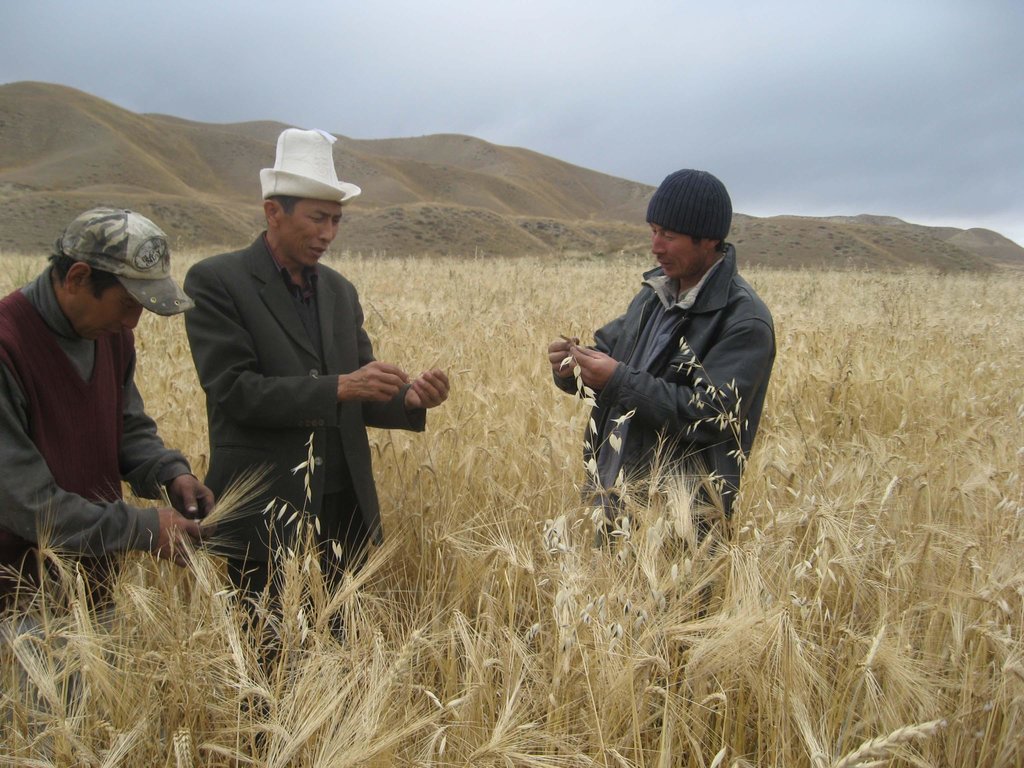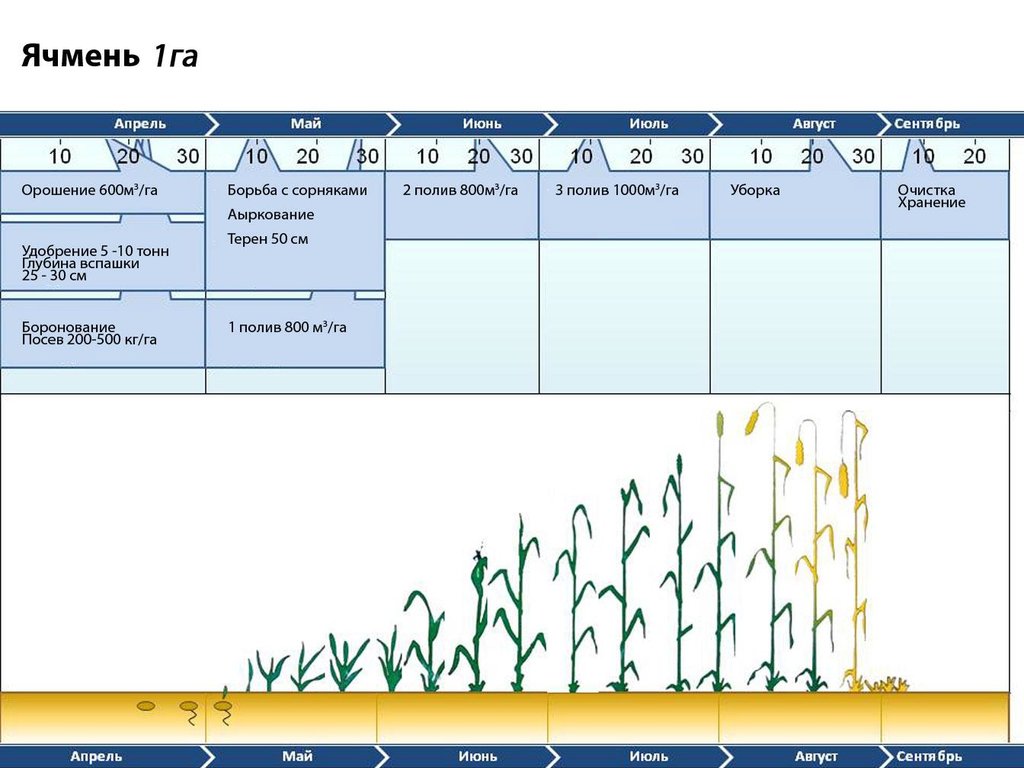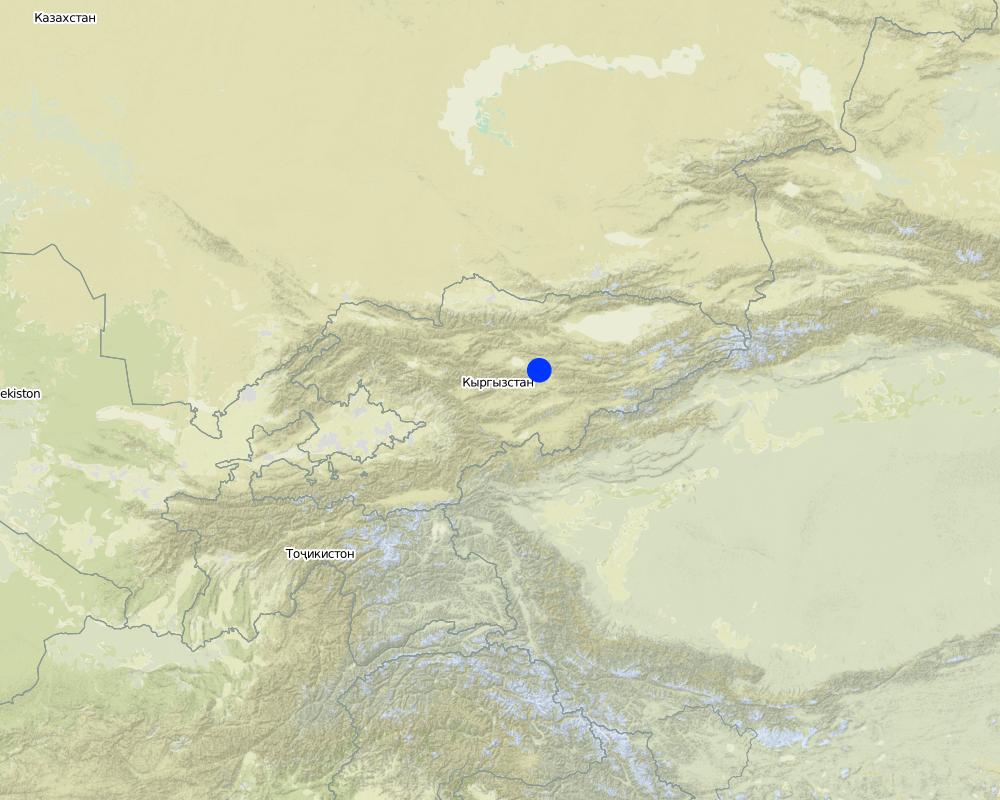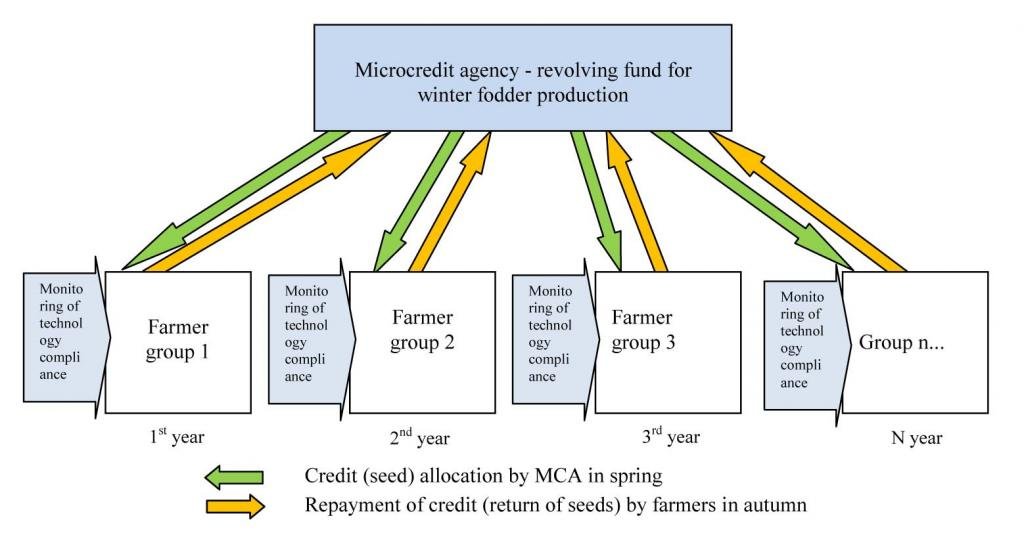Stimulating the production of winter fodder through micro-crediting [Kyrgyzstan]
- Creation:
- Update:
- Compiler: Azamat Isakov
- Editor: –
- Reviewers: Alexandra Gavilano, David Streiff
Kyrgyzstan – Central Asian Countries Initiative for Land Management (CACILM)
approaches_2466 - Kyrgyzstan
View sections
Expand all Collapse all1. General information
1.2 Contact details of resource persons and institutions involved in the assessment and documentation of the Approach
SLM specialist:
Wiedemann Christoph
christoph.wiedemann@cimonline.de
САМР Alatoo
3 Ufinskaya per.
SLM specialist:
Kozhomuratova Zhanyl
janyl@camp.elcat.kg
САМР Alatoo
3 Ufinskaya per.
Kyrgyzstan
Name of project which facilitated the documentation/ evaluation of the Approach (if relevant)
Central Asian Countries Initiative for Land Management (CACILM I)Name of the institution(s) which facilitated the documentation/ evaluation of the Approach (if relevant)
CAMP - Central Asian Mountain Partnership (CAMP - Central Asian Mountain Partnership) - Kyrgyzstan1.3 Conditions regarding the use of data documented through WOCAT
When were the data compiled (in the field)?
18/02/2013
The compiler and key resource person(s) accept the conditions regarding the use of data documented through WOCAT:
Yes
1.4 Reference(s) to Questionnaire(s) on SLM Technologies
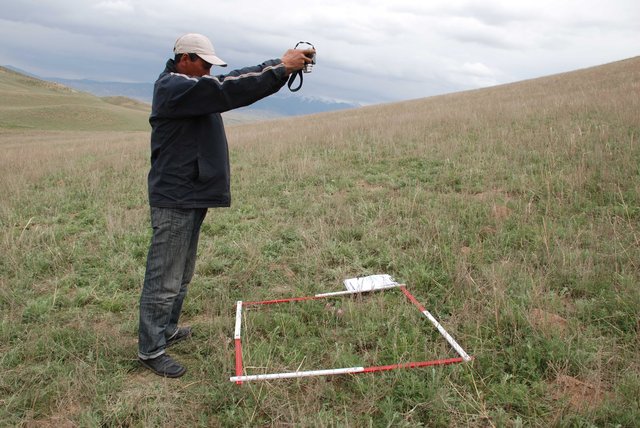
Monitoring the condition of pastures (CACILM) [Kyrgyzstan]
Monitoring the state condition of pastures.
- Compiler: Azamat Isakov
2. Description of the SLM Approach
2.1 Short description of the Approach
Establishing of micro-crediting agencies to support the sustainable production of winter fodder as a system of organizational, economic and technological measures (in the frame of CACILM).
2.2 Detailed description of the Approach
Detailed description of the Approach:
Aims / objectives: Because of a lack of skills, land, access to seeds, funding and incentives, many farmers of Naryn region do not stock sufficient winter fodder to feed their animals during the winter. As a result, in winter cattle is mostly grazed on winter pastures around settlements, leading to severe overgrazing and pasture degradation. In years when snow remains for a long time on the pastures, it is common that high numbers of animals die of starvation in spring because of the lack of fodder stocks. The documented SLM approach aims to improve domestic feeding of animals during the winter period by providing incentives for growing winter fodder, which leads to a decrease in grazing on winter pastures and their degradation. Besides it reduces the mortality of livestock, increases animal productivity and income from the sale of livestock, meat and milk.
Methods: Creation of micro-crediting agencies (MCAs) to provide farmers with the financial means to improve access to seeds. The MCAs collect applications from local farmers to get seeds
Stages of implementation: Implementation of the approach began with an analysis of the training needs of the local community in growing crops to increase stocks of winter fodder. In these areas, trainings were conducted by the Rural Advisory Service (RAS). During the training, participants were trained to select appropriate varieties for the climatic conditions of the region and farming culture. Further, flow charts were developed explaining the cultivationof these varieties. During the training, participants expressed concern that in the region no high quality fodder seeds were available. Therefore, it was decided to create a local micro-crediting agency (MCA). The MCA is engaged in providing the local population with high-quality seeds (mainly sainfoin and barley). At the beginning of the year, the MCA collects from the local community to get seeds. Applications are being reviewed by the MCA taking into account the selection criteria for micro-credit users (availability of arable land, solvency of the applicant, etc.). The seeds are purchased based on the number of requests. Local varieties which are produced in the region are preferred when purchasing seeds, in their absence the seeds are purchased in neighboring regions. Seeds are distributed in springtime to the applicants? as a loan. Borrowers must repay the loan in the autumn in the form of seeds or cash at an interest rate of 12% per annum. Returned money and seeds are accumulated by the MCA and provided primarily to new members of the community. Following this approach, MCAs were established in five villages - a revolving fund of the local community for sustainable cultivation of winter fodder. The chairman of the MCA is selected by the Supervisory Board of the MCA under the statute. Chairman and accountant are paid from interest on the loans issued.
Role of stakeholders: Everyone may use the services of the fund, regardless of gender and social status.
Other important information: This approach has been implemented by PF CAMP Alatoo within the regional program of GIZ «Sustainable Use of Natural Resources in Central Asia'.
2.3 Photos of the Approach
2.5 Country/ region/ locations where the Approach has been applied
Country:
Kyrgyzstan
Region/ State/ Province:
Naryn district
Further specification of location:
Jergetal, Minbulak, Onarsha ail okrug
Comments:
Naryn district belongs to the livestock region. Local farmers use pasture resources all year round and are not used to lay in winter fodder to the extent necessary, in addition they have low skills in growing fodder.
Map
×2.6 Dates of initiation and termination of the Approach
Indicate year of initiation:
2009
Year of termination (if Approach is no longer applied):
2011
2.7 Type of Approach
- project/ programme based
2.8 Main aims/ objectives of the Approach
The Approach focused mainly on other activities than SLM (growing winter fodder, micro-crediting agency, collection of applications, issuance of credit as seeds)
The main objective of this approach is to prevent the degradation of village/winter pastures by increasing stocks of winter fodder. This can be achieved by a timely provision of quality seeds of perennial forage crops.
The SLM Approach addressed the following problems: In Naryn province cattle breeding is almost the only source of income for 85% of the local population. At this, the provision of cattle with winter fodder is weak. The reason was the distribution of arable land to population and creation of small-contoured farms. Following the collapse of the seed farms that provided collective and state farms with high quality seeds, new land owners were not able to purchase them. The centralized management of the economy which ensured compliance with farming culture was collapsed with the reorganization of collective and state farms. All this led to a strong reduction in the yield of forage crops and reduction of the amount of prepared winter fodder. The lack of sufficient winter fodder, in turn, is increasing the load on the winter pastures. Therefore, as of today, according to Kyrgyzgiprozem, about 50% of village pastures are degraded to some degree. Creation of a revolving fund to grow winter fodder for livestock increases the stocks of fodder for the winter and prevents further degradation of winter pastures.
2.9 Conditions enabling or hindering implementation of the Technology/ Technologies applied under the Approach
availability/ access to financial resources and services
- hindering
It is required to have a start-up capital for micro-crediting agencies.
Treatment through the SLM Approach: Granting; conduct of training in search of funding (fundraising).
institutional setting
- hindering
MCA must be registered with the judicial authorities, tax authorities, this causes fear among the initiators to create MCA.
Treatment through the SLM Approach: Conduct trainings on the registration procedures with such institutions. Integration of existing Pasture Committees in MCA’s activities.
legal framework (land tenure, land and water use rights)
- enabling
The existing land ownership, land use rights / water rights greatly helped the approach implementation: This approach is fully consistent with the current legislation of Kyrgyzstan.
3. Participation and roles of stakeholders involved
3.1 Stakeholders involved in the Approach and their roles
- local land users/ local communities
Farmers
All groups of population have access to credit (seeds)
- SLM specialists/ agricultural advisers
RAS specialist from Naryn region conducted the monitoring of crop production techologies
- NGO
САМР Alatoo Public Foundation
- national government (planners, decision-makers)
- international organization
3.2 Involvement of local land users/ local communities in the different phases of the Approach
| Involvement of local land users/ local communities | Specify who was involved and describe activities | |
|---|---|---|
| initiation/ motivation | interactive | Land users participated in the worskhops on winter fodder crop production techologies. As a result of these workshops they initiated establishment of local revolving funds - microcredit agencies. |
| planning | passive | Planning and creating of micro-crediting agencies was implemented mainly by the project. |
| implementation | passive | In the implementation of the approach land users acted as beneficiaries of micro-crediting agencies’ services. |
| monitoring/ evaluation | interactive | Land users participated in the report meetings of the chairman of the micro-crediting agency. |
| Research | none |
3.3 Flow chart (if available)
3.4 Decision-making on the selection of SLM Technology/ Technologies
Specify who decided on the selection of the Technology/ Technologies to be implemented:
- mainly land users, supported by SLM specialists
Explain:
Farmers proposed the creation of a revolving fund to increase the production of winter fodder.
Decisions on the method of implementing the SLM Technology were made by mainly by SLM specialists with consultation of land users. Approach was proposed by specialists of the project.
4. Technical support, capacity building, and knowledge management
4.1 Capacity building/ training
Was training provided to land users/ other stakeholders?
Yes
If relevant, specify gender, age, status, ethnicity, etc.
This approach can be also used in adjacent agricultural sectors.
Form of training:
- farmer-to-farmer
- demonstration areas
Form of training:
- Workshops
4.2 Advisory service
Do land users have access to an advisory service?
Yes
Specify whether advisory service is provided:
- on land users' fields
Describe/ comments:
Name of method used for advisory service: Workshops on growing crops for winter feeding of cattle.; Key elements: Training, Demonstration field , Providing consultations on the site; Rural Advisory Service has been involved in all phases of trainings.
Advisory service is quite adequate to ensure the continuation of land conservation activities; RAS staff trained to this approach, and they are able to disseminate experiences.
4.3 Institution strengthening (organizational development)
Have institutions been established or strengthened through the Approach?
- yes, moderately
Specify the level(s) at which institutions have been strengthened or established:
- local
Specify type of support:
- capacity building/ training
Give further details:
MCAs were trained in financial management. Training was funded by the project.
4.4 Monitoring and evaluation
Is monitoring and evaluation part of the Approach?
Yes
Comments:
Bio-physical aspects were regular monitored by project staff, land users through measurements; indicators: Area of lands planted with perennial forage crops.
Technical aspects were regular monitored by project staff through observations; indicators: % of borrowers adherent to farming culture.
Economic / production aspects were regular monitored by project staff, land users through measurements; indicators: Yield of forage crops in relation to the last years.
No. of land users involved aspects were regular monitored by project staff through measurements; indicators: Number of borrowers.
There were no changes in the Approach as a result of monitoring and evaluation
There were no changes in the Technology as a result of monitoring and evaluation
4.5 Research
Was research part of the Approach?
No
5. Financing and external material support
5.1 Annual budget for the SLM component of the Approach
If precise annual budget is not known, indicate range:
- 10,000-100,000
Comments (e.g. main sources of funding/ major donors):
Approach costs were met by the following donors: international (The approach is implemented by means of GIZ.): 100.0%
5.2 Financial/ material support provided to land users
Did land users receive financial/ material support for implementing the Technology/ Technologies?
No
5.3 Subsidies for specific inputs (including labour)
- agricultural
| Specify which inputs were subsidised | To which extent | Specify subsidies |
|---|---|---|
| seeds | fully financed | |
If labour by land users was a substantial input, was it:
- rewarded with other material support
Comments:
MCAs have the right to determine the interest rate of credit to 12% of the total amount for the year. This amount is the remuneration of the MCA’s chairman and the accountant.
The project purchased seeds - sainfoin, barley and fodder beet, totaling approximately 1000 000 KGS. These seeds were distributed to the MCA as a grant, and the MCA gave farmers as a loan, which later served as the loan portfolio for the MCA.
5.4 Credit
Was credit provided under the Approach for SLM activities?
No
6. Impact analysis and concluding statements
6.1 Impacts of the Approach
Did the Approach help land users to implement and maintain SLM Technologies?
- No
- Yes, little
- Yes, moderately
- Yes, greatly
The implementation of this approach made it possible to increase the production of winter fodder by 15%.
Did the Approach empower socially and economically disadvantaged groups?
- No
- Yes, little
- Yes, moderately
- Yes, greatly
The poor groups of population among other were able to get credit in the form of seeds.
Did other land users / projects adopt the Approach?
- No
- Yes, little
- Yes, moderately
- Yes, greatly
Did the Approach lead to improved livelihoods / human well-being?
- No
- Yes, little
- Yes, moderately
- Yes, greatly
Borrowers were able to fully exploit the arable land (each household has its own share of land that has not been cultivated due to lack of funds) and to increase the number of prepared winter fodder.
Did the Approach help to alleviate poverty?
- No
- Yes, little
- Yes, moderately
- Yes, greatly
The farmers were able to increase the volume of winter fodder, which helps to improve livestock feeding and reduce the cost of purchased winter fodder.
6.2 Main motivation of land users to implement SLM
- increased production
Increase in stocks of winter fodder for better feeding of cattle in winter.
- increased profit(ability), improved cost-benefit-ratio
Surplus stock of winter fodder can be sold , which will provide additional revenue for land user.
- affiliation to movement/ project/ group/ networks
The approach was tested under the pilot project.
6.3 Sustainability of Approach activities
Can the land users sustain what has been implemented through the Approach (without external support)?
- yes
If yes, describe how:
The created micro-crediting agencies were provided with quality seeds of perennial forage crops, which was the start-up capital for them. Seeds were given to land users as a loan with a 12% rate. This money will be used as remuneration for MCA’s chairman and its accountant for their services, which ensures their stable operation.
6.4 Strengths/ advantages of the Approach
| Strengths/ advantages/ opportunities in the land user’s view |
|---|
| Providing quality seeds |
| Achieving a stable income from livestock |
| Strengths/ advantages/ opportunities in the compiler’s or other key resource person’s view |
|---|
|
The local community has a revolving fund for growing winter fodder (How to sustain/ enhance this strength: 1) Increase the capacity of the members of the MCA 2) Providing advisory services to farmers on growing perennial forage crops) |
| Helps to reduce and prevent degradation of winter pastures |
6.5 Weaknesses/ disadvantages of the Approach and ways of overcoming them
| Weaknesses/ disadvantages/ risks in the compiler’s or other key resource person’s view | How can they be overcome? |
|---|---|
| Required start-up capital for the creation of a revolving fund |
1) Make sure the local community to create a revolving fund with their own means through seminars; 2) Find the donor funds. |
7. References and links
7.1 Methods/ sources of information
- field visits, field surveys
- interviews with land users
7.2 References to available publications
Title, author, year, ISBN:
Annual reports of САМР Alatoo for 2009, 2010, 2011
Available from where? Costs?
САМР Alatoo PF
Links and modules
Expand all Collapse allLinks

Monitoring the condition of pastures (CACILM) [Kyrgyzstan]
Monitoring the state condition of pastures.
- Compiler: Azamat Isakov
Modules
No modules


